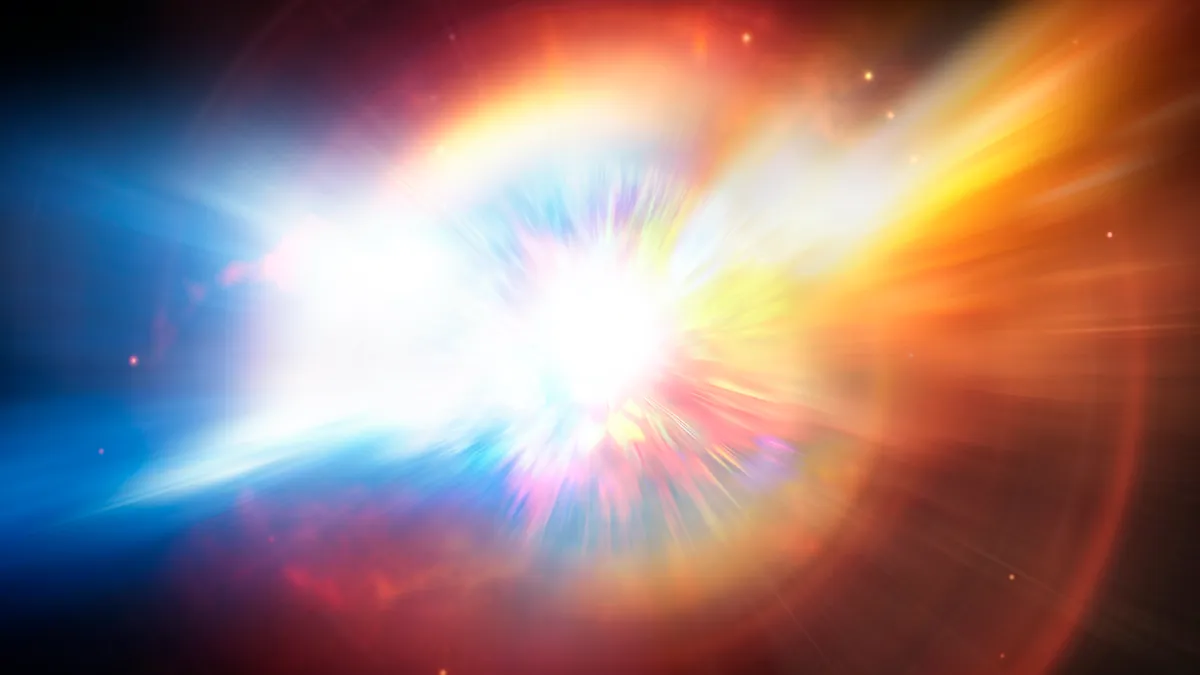Betelgeuse is going supernova? This is gonna make a bigger bang than Beyoncé’s country album. A bigger bang than this One Piece and Dune crossover? Unlikely.
Betelgeuse? Isn’t that a Tim Burton movie?
Yes! Sort of. You’re thinking of Beetlejuice, but “Betelgeuse” is pronounced in the exact same way. Betelgeuse is not the byproduct of milking a bug or saying a ghost’s name. Betelgeuse is a star. Specifically a star in Orion’s Belt. Don’t know what I’m talking about? Sure you do! Orion’s Belt is one of the easiest constellations to find. Honestly easier than the Big Dipper.
Orion’s Belt is made up of three stars that are all positioned horizontally next to each other, and each is very bright even in light-polluted skies. Surrounding the three stars is a sort of trapezoid-looking shape made of stars, which is the constellation Orion. It’s supposed to look like a dude. It doesn’t really, but the ancient Greeks had to get creative.
Betelgeuse is located in that trapezoid that makes up Orion’s body. It’s actually the constellation’s second-brightest star! Its name is derived from the Arabic bat al-jawzā, which translates to “the giant’s shoulder”. But if it goes supernova, it’s gonna be known as “history.”
What is a supernova?
A supernova is what happens to a star in the late stage of its life cycle, where the star’s changing chemical processes cause it to violently explode.
Lemme explain. Stars come in all shapes and sizes. In fact, we have a word to describe the size of the star! We measure stars in “solar masses”. Basically, it means how many of our sun (a.k.a. “Sol,” the brightest thing in our sky) can fit inside of a star. If a star is three solar masses, it’s three times the mass of the sun. Most stars do not go supernova, but rather expand and heat up then rapidly shrink and cool, becoming what is known as a White Dwarf star. However, stars that are at least eight solar masses—eight times the mass of the sun—do go supernova.
Stars emit light by burning the fuel located in their cores. Well, not really “burn” like wood or something; it’s a more complicated process called “fusion.” The core of a star is so hot that hydrogen atoms (what stars are primarily composed of) are fused together to create helium. This process produces astronomical amounts of energy, which in turn powers the star. This energy pushes outward from the core of a star in the form of heat.
For most of a star’s life, this outward force is in balance with the star’s gravitational forces, which cause the star to push inward on itself. This balance creates a stable star, like our Sun! Eventually, a star will eat through all the hydrogen in its core, which in turn causes the core to contract under gravity. This added pressure causes the hydrogen shell around the core to expand rapidly outward, turning the star into a Red Giant. As the star continues to cool, the pressure being exerted from inside the star drops even more rapidly. When the pressure drops below a certain point, the star collapses under the weight of its own gravity within seconds. This sudden collapse creates a massive shockwave of energy called a supernova.
So is Betelgeuse gonna blow?
According to the dudes with the telescopes, Betelgeuse has dipped by 0.5 magnitude since late January. Magnitude is the measurement we use to determine a star’s brightness BTW. This drop in brightness means that Betelgeuse is at the end of its life cycle. Betelgeuse isn’t a Red Giant, it’s actually a Red Supergiant—an even larger sort of star.
Betelgeuse is 1400 larger than the sun, more than a billion kilometers in diameter. Remember when I said stars only eight times the mass of the sun explode? Betelgeuse is 20 solar masses, meaning it is certainly gonna blow up spectacularly. And it’s going to do so very soon! Anytime between tomorrow and 1000 years from now!
Why don’t we know exactly when? Well, we know that a star like Betelgeuse only has about 1000 years of life left, but we don’t know exactly how long because we can’t directly observe the state of the star’s carbon-burning core. We also don’t have a lot of practice observing supernovae in the night sky, considering the last one we observed happened in the 17th century. Maybe the 27th century will be our lucky year?
(featured image: tose/Getty Images)










Published: Mar 26, 2024 04:14 pm